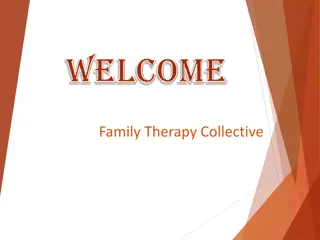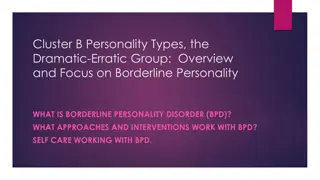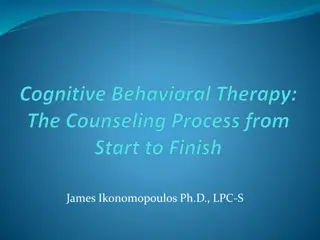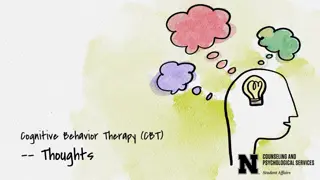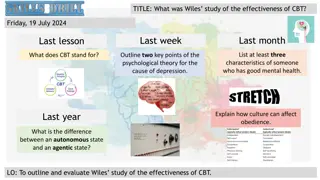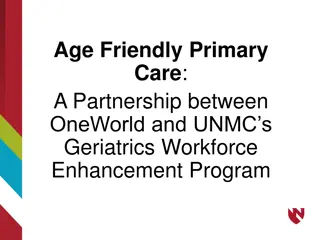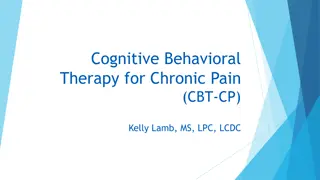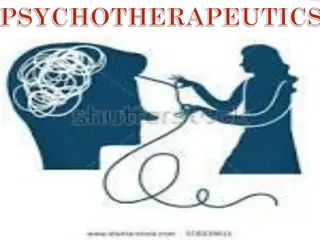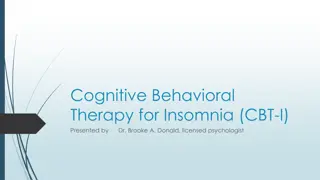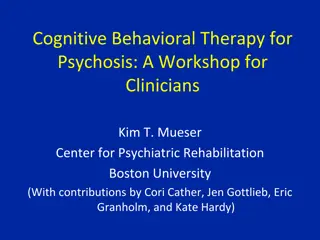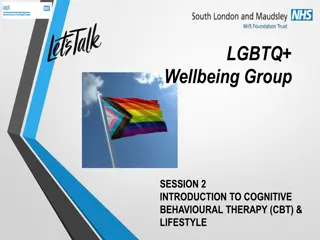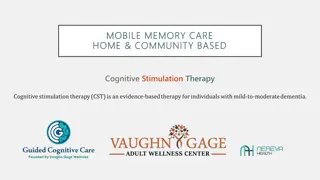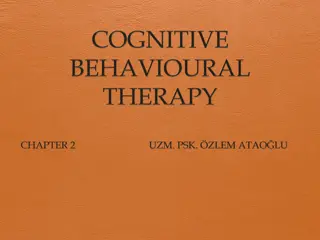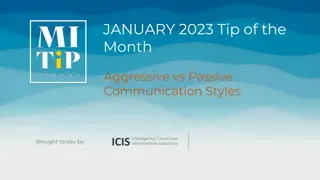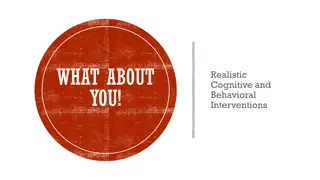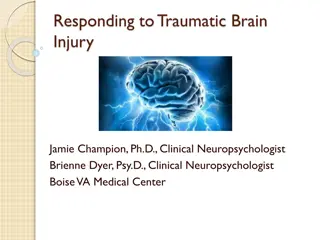Introduction to Cognitive Behavioral Therapy (CBT) for Beginners
Delve into the origins, principles, and applications of Cognitive Behavioral Therapy (CBT) through an exploration of its history, theory, and practical skills. Learn how CBT targets cognitive distortions and behaviors to enhance mental health and develop coping strategies. Discover the fundamental aspects, such as cognitive processes and behavior modifications, that form the core of CBT interventions.
Download Presentation

Please find below an Image/Link to download the presentation.
The content on the website is provided AS IS for your information and personal use only. It may not be sold, licensed, or shared on other websites without obtaining consent from the author. Download presentation by click this link. If you encounter any issues during the download, it is possible that the publisher has removed the file from their server.
E N D
Presentation Transcript
Cognitive Behavioral Therapy for Beginners Matt Butler, MSSA, LISW-S, LICDC Clinical Supervisor
Objectives for Today We re going to do these things this afternoon: We re going to do these things this afternoon: Discuss the history and underlying theory behind CBT. Learn and practice specific CBT skills for use with persons with a substance use disorder. Review shortcomings of a CBT-based approach. Make a plan for future training and refinement of these skills.
CBT: Whered it come from? Aaron Beck (the 1960s) Experiments on depression Automatic Thoughts CT became CBT!
CBT: What is it? If you heard me say You feel the way you think , what would that mean to you? A psycho-social intervention that aims to improve mental health and focuses on challenging and changing cognitive distortions and behaviors, improving emotional regulation, and the development of personal coping strategies. (APA)
Breaking down the CBT definition: Cognitive: mental processes. Behavior: everything you do. Therapy: how we try to address an issue.
Basic Principles of CBT: A scientific approach Brief and time limited Present centered Thought focused Practice and homework
Two main aspects of CBT interventions: Functional Analysis Skills Training
Looking at thinking: Look at these ten different people and their reaction to the same event (having their partner treat them inconsiderately): 1.Angry 2.Depressed 3.Jealous 4.Hurt 5.Guilty 6.Anxious 7.Happy 8.Annoyed 9.Disappointed 10. Ashamed
Whats a What s a thinking thinking error? error?
Types of Thinking Errors Catastrophizing All-or-Nothing Thinking Fortune-Telling Mind-Reading Emotional Reasoning Overgeneralizing Labelling Making Demands Mental Filtering Disqualifying the positive Low Frustration Tolerance Personalizing
Learn your ABCs Activating Event Activating Event Beliefs Beliefs Consequences Consequences
Lets Practice! How should you use the ABC model? Now practice: In your small group, one of you pick a time when something upsetting happened to you that led to you feeling or acting badly. The other person should talk you through the ABCs (Activating Event, Beliefs, Consequences): 1. What happened? (Activating Event) 2. How did you respond? (Consequences) 3. What thoughts did you have that led you to that response? (Beliefs) Next, ask questions about the beliefs and challenge whether they re accurate.
CBT for Substance Use Disorders: Functional Analysis What are some thoughts, feelings and behaviors that lead to a person using? Skills Training Learn different coping skills other than use.
Thoughts on CBT for Substance Use Disorders: CBT appears to be effective for SUD. Individual or group settings. Motivational Interventions Contingency Management Relapse Prevention Different strategies for different DOC Often encouraged by justice system
Lets Practice (Again)! Do a Functional Analysis for SUD: Thoughts: What was going through your mind? Feelings: How did you feel physically and emotionally? Behaviors: What did you do next? (Use or skills) Positive Results: What did you like about drinking/using? Negative results: What bad things happened after you used/drank?
CBT: The Drawbacks Sometimes, the problem isn't in your head. Many EBPs aren't normed for everyone. Some clients feel this technique is superficial. Maybe you're not interested in homework? If all you have is a hammer... Trauma-informed care is important. CBT doesn't work as well as it used to!
How can you get better at this? 1. Do more CBT training! 2. Look up resources! (Books, videos, worksheets) 3. Practice some of these skills in your own life. 4. Try to judge times when CBT is appropriate (they aren t all).
Any questions?
Call or email anytime! Matt Butler (440)855-3236 Matt.butler@cccohio.com
References Cognitive Behavioural Therapy for Dummies , Branch, R. and Willson, R.: Wiley (2010). https://hawaiianrecovery.com/rehab-blog/cognitive-behavioral-therapy-cbt https://americanaddictioncenters.org/cognitive-behavioral-therapy https://www.healthline.com/health/abc-model#how-it-works https://www.simplypsychology.org/cognitive-therapy.html https://beckinstitute.org/about-beck/history-of-cognitive-therapy/ https://bettertherapy.com/blog/not-cbt-therapist/ https://www.theguardian.com/lifeandstyle/2015/jul/03/why-cbt-is-falling-out-of-favour-oliver-burkeman Feeling Good: The New Mood Therapy , Burns, D.: Harper (2008). https://www.mentalhealth.va.gov/substanceuse/cbt-sud.asp https://www.ncbi.nlm.nih.gov/pmc/articles/PMC2897895/



